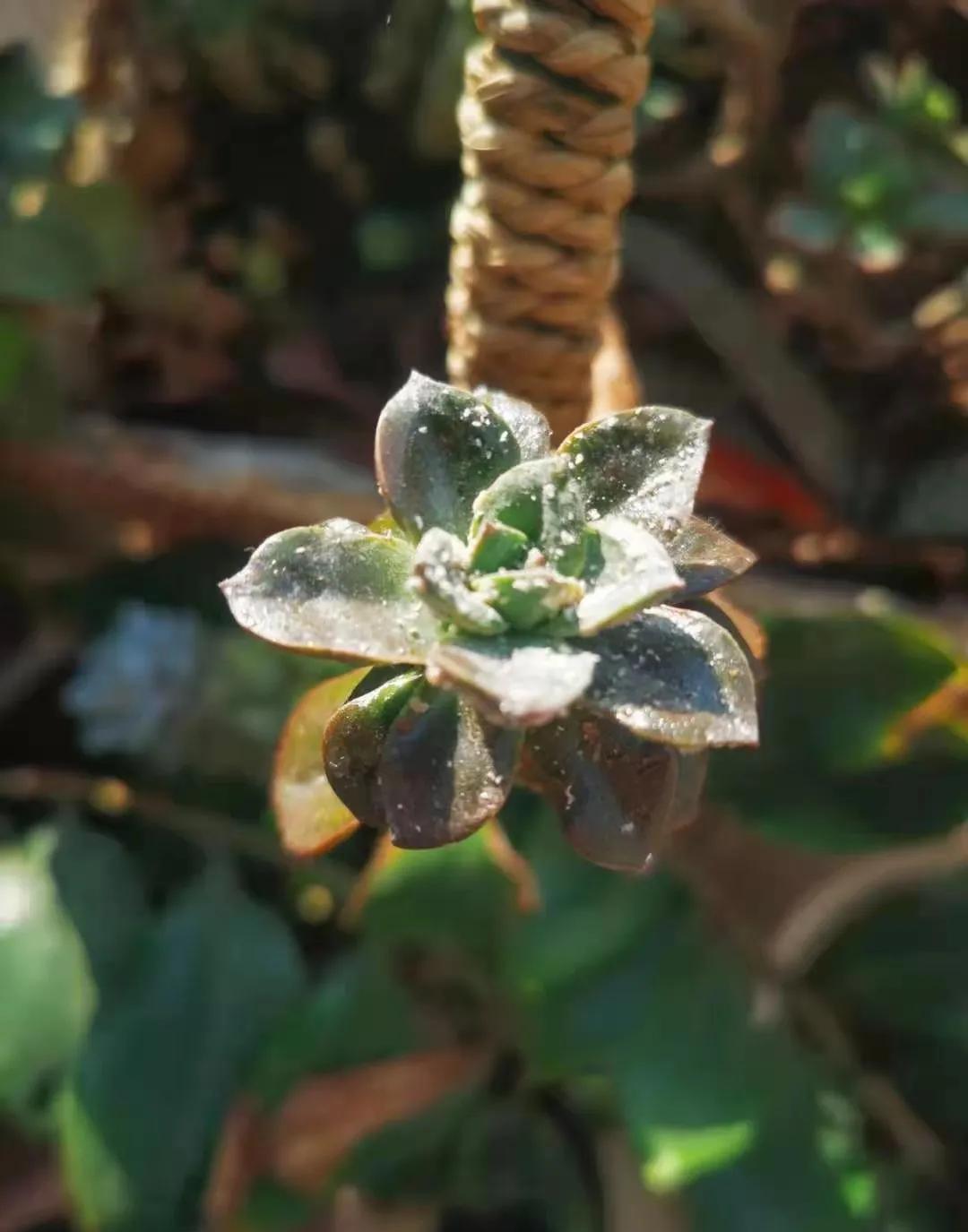Spring is just around the corner, and the family's flesh flowers and kumquats have a lot of ticks. Do not underestimate this small insect shell, if you can not get timely control, not only will directly shadow viewing, but also directly cause the flower growth weakening, leaf color wilting, and even the whole plant to die.

There are many species of ticks: there are many species of ticks on flowers alone, such as mealybugs, blowing sponge bugs, grasshoppers, shield bugs, and bulbous silkworms.
Mealybugs
Mealybugs often occur on succulent flowering plants, such as jade butterflies, Guanyin lotuses, cacti, mountain shadow fists, measuring scales, etc. It also endangers Fuso, Junzilan and so on.
The surface of the mealybug has a white or milky yellow waxy cover, which resembles white powder, commonly known as the white powder. Among them, the root mealybug is not easy to find because it appears in the root, and once it harms the flowers, it can cause the flowers to grow weakly and the leaves to wither and yellow.
Blowing sponges
Blowing sponges mainly harm some southern flowers, such as camellias, osmanthus flowers, kumquats, bergamots, laughing, begonias, fuso, junzi orchids, etc. In addition, it also endangers the moon season, peonies, roses, figs, etc.
Grasshoppers
Grasshoppers: endanger begonias, cherry blossoms, figs, purple weeds, moon seasons, red maples, citrus, etc. In addition, it also endangers flowers such as moons, peonies, roses, figs and so on.
The grasshopper has a tan back and a flat body that resembles a straw shoe, hence the name grasshopper. Its nymphs and female adults harm bud axils, shoots, leaves and branches, sucking sap, causing poor plant growth and leaf and fruit shedding.
Shield worm
Shield borer: There are many types of shield borers, which harm flowers such as laughing, osmanthus flower, iron tree, camellia, moon season, peony, rhododendron, camellia, jasmine, palm bamboo, kumquat, scattered tail sunflower, oleander, evergreen, cactus and other flowers.
Shield borers include the monthly white shield borer, mulberry white borer, snake-eyed bug, coconut roundworm, etc., with white, brown, gray, gray-yellow and other body colors. The shield worm body is covered with a waxy mesemb, so named because the round shell resembles a "shield". In addition to harming flowers, shield borers also harm many forestry trees, such as large-leaved boxwood, cloves, plum blossoms, etc.
The geographical distribution of ticks in China is very wide, 3 to 5 generations occur in the southern outdoors a year, 2 generations occur in the north a year, overwintering adults begin to lay eggs from late April, and mid-May is the peak of spawning, and each female lays 250-300 eggs. The eggs begin to hatch in early May, with incubation peaking in mid to late May. The hatching nymphs crawl scatteredly to feed on 2-5 year old branches, with more branches and the shady side of the branches. After 7-10 days, it is fixed on the branches, secreting woolly wax filaments, gradually forming a shell. The first generation of nymphs has a 40-50 days stage, but the crawling period is short. The first generation of adult insects begins to feather in late June, peaking in early to mid-July. Adults continue to lay eggs under the meseillar shell, with an egg stage of about 10 days. The second generation of nymphs occurs in August, and the nymph period is 30-40 days. Male adults appear in September, and after the male and female have crossed their tails, the males die and the females continue to be pestized until late September. After that, stop feeding and start overwintering.
In recent years, with the improvement of people's living standards, flower consumption has long become a fashion, almost all over the place there are flower markets of different sizes, south flowers and north transportation, greenhouse flower planting, is conducive to the safe wintering of adult insects; urban residents in winter indoor flowering, but also to the insects in the flowers to provide conditions, coupled with the indoor general inconvenience of spraying insecticides, to the control of insecticides to bring difficulties, therefore, many citizens and flower farmers cultivated flowers suffer from the harm of insects for a long time, A safe, effective, pollution-free way to control insect shell insects has not been found. To this end, I would like to provide you with a few tips for controlling insect shell insects.
Indoor control of insects on flowers should first consider health and safety, should not spray insecticides with fumigation odor and strong toxicity, should be based on physical control, the specific methods are as follows:
1, to detect early, early prevention and control. When the foliar surface is found to have a new species of insects, and the number of insects is still small, it can be controlled by spraying 20% alcohol.
2, high pole flowers can be wrapped around the branch a circle of tape, wrapped after 10 pm, the next day will find that the insects are concentrated below the tape pole, take manual centralized elimination.
3, the root of the whiteflies, can be through root repair or root watering of thiamethoxine insecticide, thiamethoxine suction is strong, can be absorbed through the roots, transmitted up and down, to kill the shell insects and other planthoppers, aphids.
4, when the number of ticks is larger, you can use insecticide + washing powder foliar spraying, especially some meat flowers and kumquats, iron trees, camellias, moon seasons and other flowers and leaves spraying liquid is not easy to attach, in the spraying of pesticides can add a small amount of laundry, improve the control effect. Pesticides can choose to kill ticks and thiazezine, and flowers with ticks can be moved outdoors during the safe period, and then moved indoors after spraying.
Author: Zhang Lining Visiting Professor, Senior Agronomist, Qingdao Agricultural University